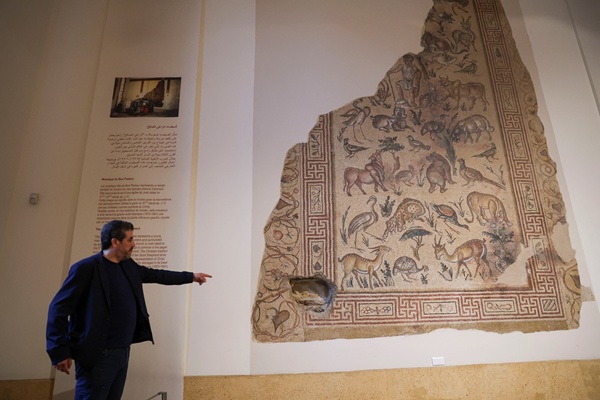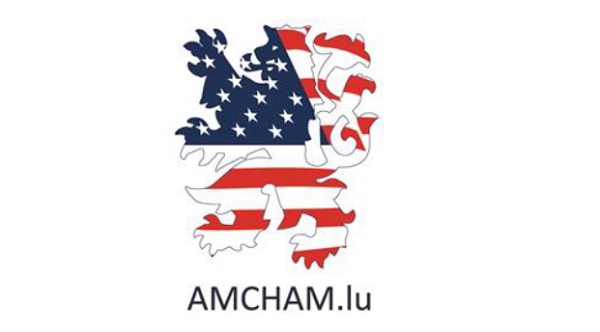 Sarkis Khoury, Lebanon's Director General of Antiquities, points at a mosaic artefact that was damaged during the Lebanese civil war, at the National Museum of Beirut, in Lebanon on 10 April 2025.;
Credit: REUTERS/Mohamed Azakir
Sarkis Khoury, Lebanon's Director General of Antiquities, points at a mosaic artefact that was damaged during the Lebanese civil war, at the National Museum of Beirut, in Lebanon on 10 April 2025.;
Credit: REUTERS/Mohamed Azakir
BEIRUT (Reuters) - When Lebanon's civil war erupted 50 years ago this month, its national museum became a flashpoint of its capital's deadly frontline, with militants barricaded among ancient sarcophagi and sniping through historic mosaics.
Now, students and tourists roam through its artefacts - some still blackened by indoor campfires lit by those fighters - and into a new pavilion opened during Lebanon's most recent war last year, when Israel and armed group Hezbollah traded heavy fire.
For its admirers, the building not only houses the country's heritage, but also symbolises its resilience.
"I hope these young people I see here also know what happened in the museum in 1975, because what happened here is something worthy of respect," said Lebanon's culture minister Ghassan Salameh, speaking to Reuters in the main museum hall. "There is a right to forget. The Lebanese who want to forget the civil war – it's their right to do so. But there is also a duty to remember, so that we do not repeat it again, and again, and again."
The war erupted on 13 April 1975, after Christian gunmen fired on a bus carrying Palestinian fighters in Beirut - just a few kilometres from the museum, which first opened in 1942.
A frontline running directly adjacent to the museum split east Beirut from the west. After militants took up the museum as a barracks, the director of antiquities at the time, Maurice Chehab, ferried small artefacts to vaults at Lebanon's central bank and encased the larger pieces in reinforced concrete to protect them from shelling.
At least four major pieces were damaged, Salameh said. They are visible in the museum today, including a football-sized hole in a floor-to-ceiling 5th century mosaic used by snipers to target rival militants near the front.
The war lasted 15 years, leaving more than 100,000 dead and displacing hundreds of thousands more. Halfway through it, Israeli troops invaded all the way to Beirut and Hezbollah was founded the same year, vowing to push Israel out.
In 2023, a new war erupted between the old foes, when Hezbollah launched rockets into Israel, triggering a year of tit-for-tat strikes until Israel escalated its air and ground campaign, leaving Hezbollah badly weakened by the end of 2024.
Even as that conflict was raging, the museum worked to open a new wing for rotating exhibitions. As construction was under way, archaeologists uncovered dozens of artefacts that Chehab had buried in the museum's backyard to protect them, said Sarkis Khoury, Lebanon's current director of antiquities.
He spoke to Reuters while standing in front of an outer wall damaged during the civil war that museum authorities had decided to preserve as a testament to its resilience.
"The things we left visible are a lesson for the future, because we are a country that should be a country of peace, a country of coexistence, because this is our history," said Sarkis Khoury, Lebanon's current director of antiquities. "Its face is full of wounds and wrinkles, but this is a beautiful face for Lebanon," Khoury told Reuters, gesturing at the pockmarked wall.
Keeping the wall is a rare example of memory preservation in Lebanon, where other landmarks of the civil war have remained abandoned or were covered up by the rapid construction of high-rises once the conflict ended.
The post-war administration agreed a general amnesty for all political crimes perpetrated before the war's end, and most school curriculums opt not to teach its history.
Asked whether Lebanon should one day establish a museum dedicated solely to the civil war, Salameh, the minister, said no - because it had only "produced destruction." But he remained hopeful about his country's future. "This country has been declared dead dozens, even hundreds of times... but this part of the Mediterranean has remained standing, with its specificities and its problems… It never ceases to be."








